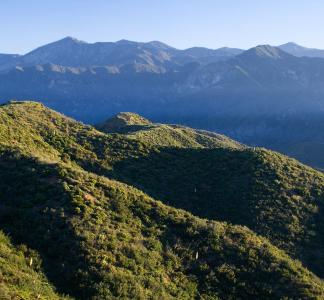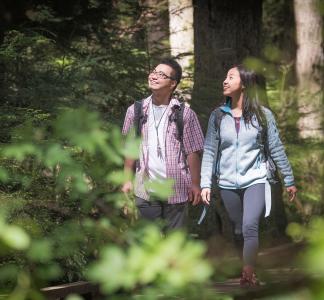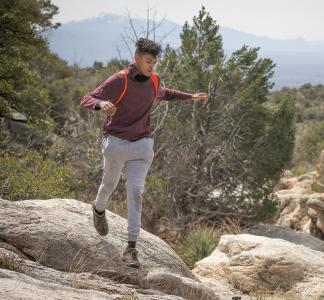COVID-19 highlights why the conservation movement must support park equity
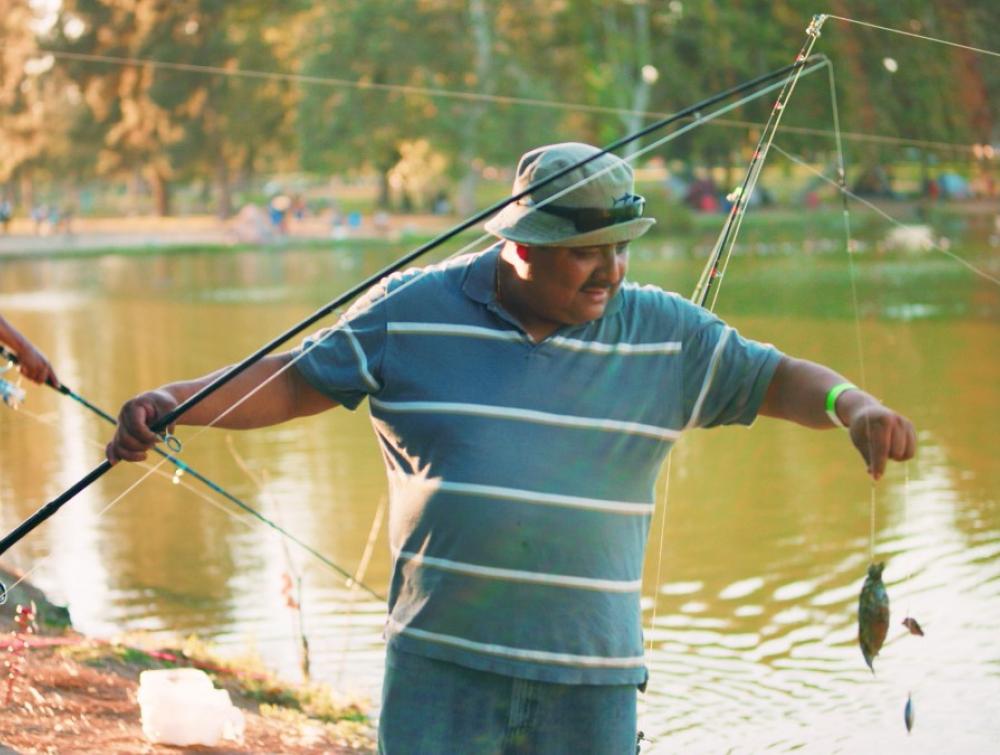
Local parks provide opportunities for outdoor experiences - from walking paths to fishing.
Lorenzo Sandoval, Guppies Fishing Adventures
Pandemic and response highlight ongoing, systemic problems
In neighborhoods across the country, outdoor spaces like beaches, trails and parks have been closed off or severely limited. To reduce exposure to the COVID-19 virus, restrooms have been locked, playgrounds shuttered and basketball hoops removed. Programs that provide safe mass transit options to reach trailheads are on hold. However, for many communities, severely limited access to the outdoors is nothing new.
The response to the pandemic is exposing systemic inequities that have left black and Latino populations the most impacted. The benefits of having access to a space where one can be wrapped in greens and browns, away from the grey, a place for community that can also be a place for distancing-socially, is what high and very high park-need communities have been demanding for decades: true multi-benefit spaces, for the community and by the community. As we think of a post COVID-19 world, it’s crucial that we move forward in a way that supports racial, environmental and overall social justice.
In a recent conversation with fellow park equity movement builder Francisco Romero, Manager of Community Transformation for Promesa Boyle Heights (PBH), a Los Angeles community-based non-profit organization, he shared what parks mean for his community and how PBH community members are being impacted by the local response to Covid-19.
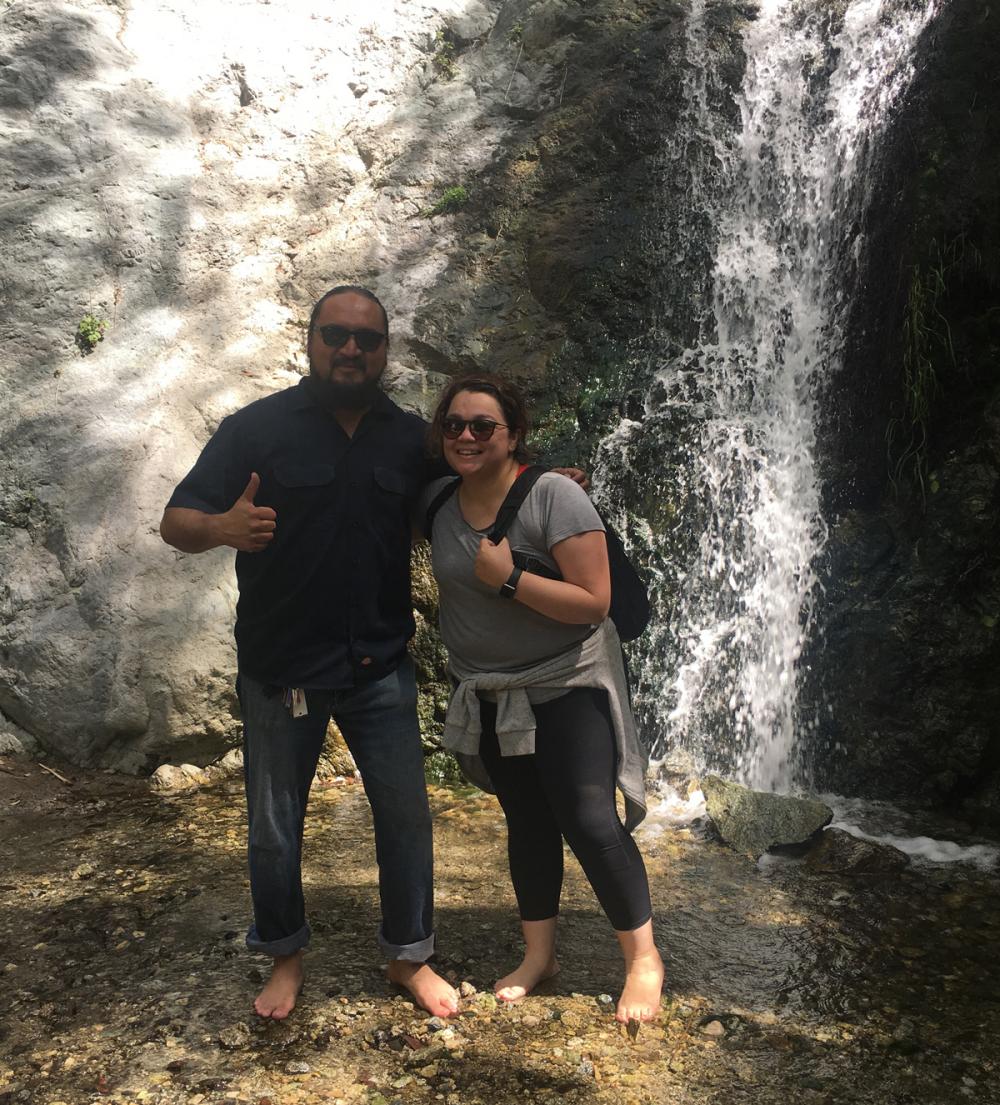
Francisco Romero (left) and Yvette Lopez-Ledesma (right)
Yvette Lopez-Ledesma, TWS
Q: Tell me about outdoor space, park space in the neighborhood where you work. How much is available? How is it used?
Francisco Romero: The community where I work is Boyle Heights, “east of the river” in Los Angeles. There are about 90,000 people here in Boyle Heights, the majority of Mexican descent, and it is an immigrant enclave home to historically important centers such as Mariachi Plaza, El Mercado and Dolores Mission.
It is also the home to about a dozen “listed" parks. Their sizes range from a carved-out corner green space with a few benches, a patch of grass and a handful of trees called the Ross Valencia Community Park (which is under one-tenth of an acre) to another ‘listed’ park, a community pool area of about 1.5 acres, housed at the embattled home of the Rough Riders at Roosevelt High School.
Boyle Heights is also home to Hollenbeck Park, which has been around since 1892 and is just over 20 acres in size, complete with walking trails, a music pavilion stage, and a man-made lake that used to have a small boat house back in the day. Gentrifiers, hipsters and real-estate conglomerates have had their eyes set on properties surrounding this park, envisioning an Echo Park-type takeover whose ripple effects would cause an increase in rent as a preferred push-out tactic.
"There is an extremely limited amount of parks and open spaces to serve the number of people that live here." - Francisco Romero, Manager of Community Transformation for Promesa Boyle Heights
Ten of these listed parks sit within 1,000 feet of freeways--so close that poor air quality is harmful to people’s health. An elevated section of Interstate 5 cuts right over Hollenbeck Park. In fact, four freeways crossed the already established barrio, not the other way around--and that process itself was a tumultuous part of Los Angeles displacement history. There is an extremely limited amount of parks and open spaces to serve the number of people that live here. Although on paper, 75 percent live within a half-mile walking distance from a park, access is not as easy as it may seem. The traffic-congested gauntlet that families have to cross through to get to a park can be deadly, with pedestrian collisions on a steady rise over the past decade.
Despite these challenges, families make the trek, and these parks fill to capacity when school is out, on the weekends and holidays. World famous ‘carne asadas’ or BBQ parties galore, with Mexican corridos as the soundtrack, and kids by the hundreds on the swings and slides make wonderful memories. Parks--whether pocket-sized, a bench with a tree or even a unique place like Evergreen Cemetery, which has a walking trail with exercise equipment nestled next to it--are how people find a way to get out, walk, play and enjoy. Seniors from the community tuck themselves under some of the little tree canopy that exists, gathering to reminisce about their hometown placitas they miss so dearly.
Parks are essential spaces playing multiple roles: that of local gym, social hub and backyard, as most Eastsiders are renters living in dense multi-unit properties, where every inch of greenspace on site has been cemented over to make way to stack another rental unit. In fact, many of the señoras line up dozens upon dozens of planters in their cemented yards to create green mini-jungles to block the scorching hot sun and reduce the heat-island effect. Parks are also some of the few spaces where our increasing houseless neighbors can find a shaded place to rest and wash up in the public restrooms during the day.
Q: Have you noticed a difference in how parks are used in the current pandemic?
Francisco Romero: Now, with the social-distancing restrictions amid COVID-19, many of the roles local parks play have been brought to a screeching halt, with a few exceptions. Pecan Park, a small four-acre park located down the street from our Promesa and Proyecto Pastoral offices, has been converted into a shelter, housing about 30 people who are quarantined and cannot leave. Other residents cannot visit either. Aliso-Pico Recreation Center, which is just a few blocks away on a quarter-acre lot that usually serves as a learning center, play area and sports facility for hundreds of local children, is also shut down, and now serves as a food distribution center for local families. All of the abuelitos from the surrounding senior centers are stuck and can be seen looking out of their balcony windows, waiting for the day they can return to see their compadres at the park and feed the pigeons bread crumbs.
The outdoor exercise equipment at places like Hollenbeck Park are all but abandoned, except for a few brave souls who hop on to do a few reps, but not before wiping things down with disinfectant...just in case. The ducks at the lake there almost seem to glare out into the neighborhood homes, wondering where everybody is, but they surely don’t mind the absence of hundreds of semi-trucks and cars spewing particulate-matter and clogging the freeway that runs above the lake. A bit of fresh air for all.
Q: How are community members filling the void created by restrictions on park access during the pandemic?
Francisco Romero: Many community members, avoiding close contact with others, strap on gloves and masks to walk around the block or empty school perimeters, crossing over mid-street if they see another neighbor coming by. We all wave at each other, saying “buenas tardes y gracias” for keeping distance. Others are finding ways to do light stretches and exercise in their living rooms or on their small porches. As summer heat approaches - already here really - families are bringing out their patio umbrellas and plastic kid pools to cool off a bit, since the local park pools and splash-pad water play areas are all shut down for now. Luckily, some of the park recreation centers will also stay open as cooling centers. This will benefit many of the seniors in the barrio who run the risk of heat exhaustion.
The Los Angeles County Department of Parks and Recreation, in consultation with public health officials, recently reopened golf courses and trails with limitations, and local parks will continue to be open for passive use such as walking and jogging. Slowly but surely, communities are inching closer to being able to gather in public spaces.That day is not here yet, so we continue to take precautions.
Q: What is your hope for the future of parks in your neighborhood? What must we do to move forward in a way that supports racial, environmental, and overall social justice?
Francisco Romero: Undoubtedly, the process for rectifying and closing the gap created by a legacy of dispossession, displacement, segregation, abandonment, discriminatory planning practices and nearly a century of little-to-no investment in park resources for poor and working-class communities will take some time. It will require a new approach in funding priorities that makes equitable investments in park-poor communities across Los Angeles. There is the new "Measure A" park funding that has come online, which brings about $95 million investment per year in perpetuity, and can play an instrumental role in turning that tide. However, this will require close monitoring of decisions being made by policy-makers to ensure that the nearly one-third of that budget slated to build out and or improve parks in barrios such as Boyle Heights is actually being disbursed.
Another vision is that funding of this type, whether local, state or federal, will be infused to leverage dollars to plan and build a massive multi-benefit, green-infrastructure and low-impact development campaign that sets its sights on immediate improvements and long-term change. One hundred years from now, our great, great grandchildren could read in history books that it was this period in time when Los Angeles made good decisions and investments that paved--or shall we say “unpaved”--the way for our city to become an urban oasis. Neighborhoods will have tree canopies everywhere and magnificent capture systems storing water in underground aquifers. Everything would be connected through an amazing mass transit system, fueled by solar energy, cutting pollution in the air. This is a sustainable future, where clean air, shade and access to parks--as large as Hollenbeck Park or as small as the Ross Valencia corner pocket park--is not determined by the color of your skin or zip code.
That shared vision of a better future inspires the movement for park equity. To support that vision, the conservation movement needs an understanding of the inequities that impact poor and working-class communities of color--a state of affairs the coronavirus crisis has both highlighted and exacerbated. In Los Angeles County, 52.6 percent of residents live in high and very high park-need areas. And according to the Trust for Public Land, 100 million people nationwide don’t have a park within a 10-minute walk of home.
A critical first step to expanding park access nationwide is for lawmakers in Congress to consider these long-standing inequities as they develop proposals to provide relief from the COVID-19 pandemic. These measures should include permanently and fully funding the Land and Water Conservation Fund; investing more in programs like the Outdoor Recreation Legacy Partnership Program (ORLP) or Urban Park and Recreation Recovery (UPARR); and passing legislation like the Transit to Trails Act and the Outdoors for All Act
These efforts, if enacted, can provide a solid foundation to address outdoor access problems nationwide. Our role in a post-pandemic society is to continue caring about each other’s well-being and ability to thrive. The call to action for each one of us is to recognize that parks are an essential component of healthier, more livable communities and to take the steps necessary to ensure safe, equitable access to the outdoors.
